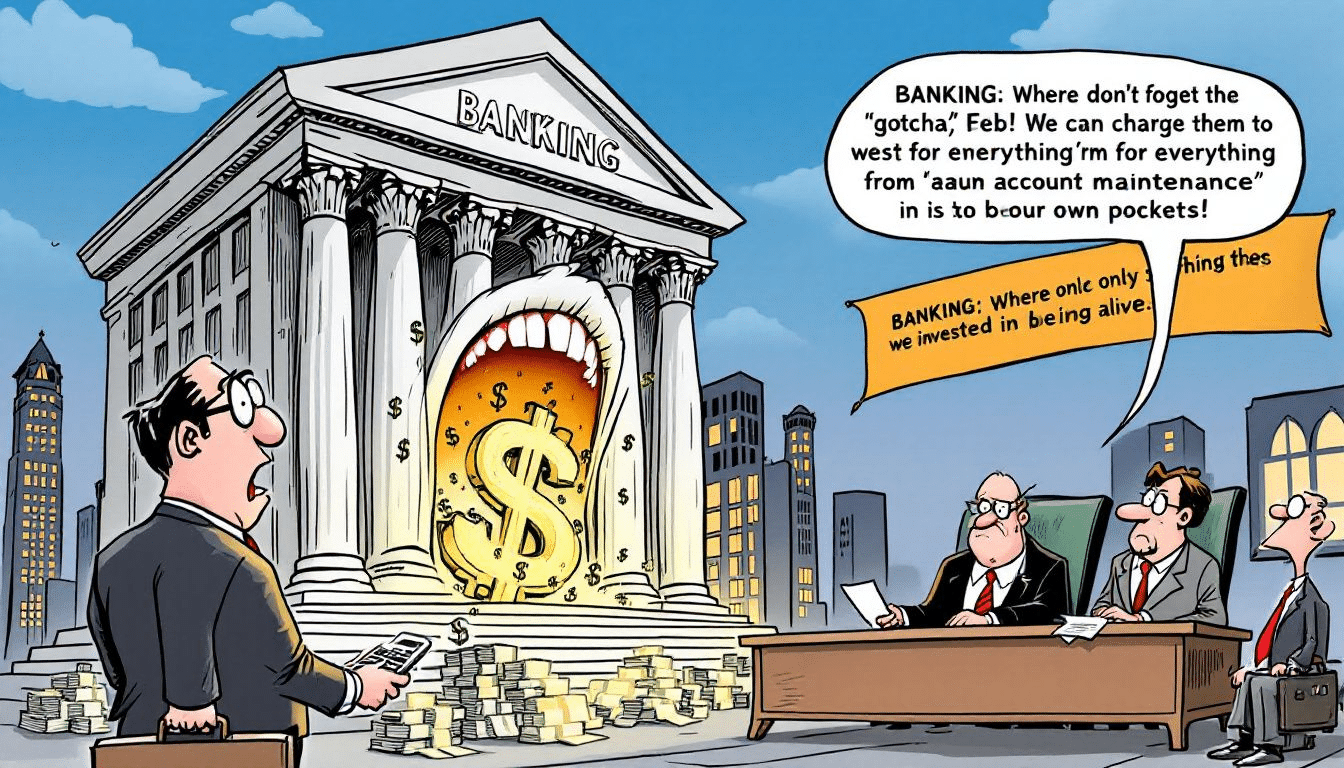How Much Does It Cost to Buy a Bank? Find Out Here!
InvestGlass offers a comprehensive platform that simplifies the complex process of building or buying a bank, making it more accessible and cost-effective for investors, entrepreneurs, and private individuals. By consulting with financial experts or investment bankers specializing in financial institutions, you can gain insights into acquisition costs and regulations. This innovative tool helps manage cash payments, equity investments, and savings, which are crucial when dealing with the substantial dollar amounts involved in such transactions.
Starting with the initial investment, which can be upwards of $2 million just for acquisition, there are several factors to consider, such as regulatory fees, legal expenses, and the cost of due diligence. InvestGlass helps streamline these aspects by offering tools for efficiently managing debts, credit, and other financial obligations. This ensures that the costs are kept as low as possible, maximizing profits from the investment.
Most people looking to enter the banking sector are deterred by the complexity and high costs associated with setting up or purchasing a bank. However, with InvestGlass, access to the necessary resources is greatly simplified. The platform provides detailed insights and analytics, helping you understand where your money is going and how to optimize your investment for better returns.
Additionally, InvestGlass aids in engaging with the country’s regulatory environment and securing the necessary approvals, thus reducing the time and effort required. For those looking to expand their portfolio or enter new markets, InvestGlass provides a reliable and efficient pathway to owning a bank, ensuring that every dollar invested contributes directly to the financial stability and growth of your enterprise.
 Owning a bank begins with grasping the various upfront costs involved. Besides the purchase price, one must consider regulatory fees, legal expenses, and due diligence costs. These initial expenses lay the foundation for your investment and pave the way for a successful acquisition.
Key initial costs encompass purchasing the bank, fulfilling regulatory requirements, and performing thorough due diligence to accurately assess the financial institution’s value. Consulting with financial experts or investment bankers specializing in financial institutions is crucial to identify associated risks and ensure a comprehensive evaluation. Each element significantly impacts the overall cost of acquisition.
Owning a bank begins with grasping the various upfront costs involved. Besides the purchase price, one must consider regulatory fees, legal expenses, and due diligence costs. These initial expenses lay the foundation for your investment and pave the way for a successful acquisition.
Key initial costs encompass purchasing the bank, fulfilling regulatory requirements, and performing thorough due diligence to accurately assess the financial institution’s value. Consulting with financial experts or investment bankers specializing in financial institutions is crucial to identify associated risks and ensure a comprehensive evaluation. Each element significantly impacts the overall cost of acquisition.
 Beyond the initial costs, several additional financial considerations must be taken into account. These include starting capital, operating costs, and integration expenses, which are crucial for the bank’s ongoing operations and long-term success. Unlike purchasing shares in public companies, which can be done with a few clicks, acquiring a bank involves a more complex and detailed process.
Considering these additional factors aids in strategic planning and ensures effective navigation of the financial landscape. Proper planning and fund allocation are key to managing these expenses and achieving sustainable growth.
Beyond the initial costs, several additional financial considerations must be taken into account. These include starting capital, operating costs, and integration expenses, which are crucial for the bank’s ongoing operations and long-term success. Unlike purchasing shares in public companies, which can be done with a few clicks, acquiring a bank involves a more complex and detailed process.
Considering these additional factors aids in strategic planning and ensures effective navigation of the financial landscape. Proper planning and fund allocation are key to managing these expenses and achieving sustainable growth.
 Once operational, a bank must manage several ongoing expenses, including compliance and regulatory costs, staffing and payroll, and technology and infrastructure maintenance. Effective management of these costs is crucial for long-term success and sustainability.
Recurring costs for running a bank also include facility maintenance, utilities, and insurance. These expenses are necessary to ensure smooth operations and consistent services to customers.
Once operational, a bank must manage several ongoing expenses, including compliance and regulatory costs, staffing and payroll, and technology and infrastructure maintenance. Effective management of these costs is crucial for long-term success and sustainability.
Recurring costs for running a bank also include facility maintenance, utilities, and insurance. These expenses are necessary to ensure smooth operations and consistent services to customers.
 Strategic planning is essential for the successful operation of a bank. It involves developing a robust business plan, market expansion, diversification strategies, and risk management to navigate the financial landscape and ensure sustainable growth.
Effective strategic planning identifies opportunities, mitigates risks, and achieves long-term success in the banking sector.
Strategic planning is essential for the successful operation of a bank. It involves developing a robust business plan, market expansion, diversification strategies, and risk management to navigate the financial landscape and ensure sustainable growth.
Effective strategic planning identifies opportunities, mitigates risks, and achieves long-term success in the banking sector.
Key Takeaways
- Acquiring a bank involves significant initial costs, including regulatory fees, legal expenses, and due diligence, in addition to the purchase price, which can range from USD 2 million to over USD 10 million depending on the bank’s assets.
- Ongoing operational expenses such as compliance and regulatory costs, staffing, payroll, and technology maintenance are crucial for sustaining bank operations and must be effectively managed to ensure profitability.
- Strategic planning, including developing a robust business plan and effective risk management, is essential for the successful operation and long-term growth of a bank.
Understanding the Initial Costs
 Owning a bank begins with grasping the various upfront costs involved. Besides the purchase price, one must consider regulatory fees, legal expenses, and due diligence costs. These initial expenses lay the foundation for your investment and pave the way for a successful acquisition.
Key initial costs encompass purchasing the bank, fulfilling regulatory requirements, and performing thorough due diligence to accurately assess the financial institution’s value. Consulting with financial experts or investment bankers specializing in financial institutions is crucial to identify associated risks and ensure a comprehensive evaluation. Each element significantly impacts the overall cost of acquisition.
Owning a bank begins with grasping the various upfront costs involved. Besides the purchase price, one must consider regulatory fees, legal expenses, and due diligence costs. These initial expenses lay the foundation for your investment and pave the way for a successful acquisition.
Key initial costs encompass purchasing the bank, fulfilling regulatory requirements, and performing thorough due diligence to accurately assess the financial institution’s value. Consulting with financial experts or investment bankers specializing in financial institutions is crucial to identify associated risks and ensure a comprehensive evaluation. Each element significantly impacts the overall cost of acquisition.
Purchase Price of an Existing Bank
The most straightforward way to own a bank is to purchase an existing one. The purchase price for an existing bank can vary significantly based on its asset base and operational infrastructure. For instance, the minimum price for an offshore bank starts at around USD 2 million, but it is common to see prices ranging from USD 5 million to 10 million. These costs can escalate further for larger banks with more extensive assets and established customer bases. If you want to own bank, consider these factors carefully. Many banks derive income from a variety of traditional and operational methods, including lending money to individuals and businesses, charging fees for various services, and managing the costs associated with their infrastructure. Assessing the purchase price requires evaluating the bank’s current operations, customer relationships, and its industry position. Larger banks with strong infrastructure and extensive account portfolios tend to be pricier but promise higher returns, laying the groundwork for future profitability and success.Regulatory Requirements and Legal Fees
Regulatory requirements and legal fees form critical initial costs when acquiring a bank. Securing a banking license incurs substantial expenses for team formation, initial capital, and legal consultations, including the management of bank accounts. Regulatory agencies mandate compliance with stringent standards to ensure financial stability and consumer protection. Hiring legal and business advisors to navigate the complex licensing process further adds to the costs. These professionals ensure compliance with regulatory requirements and legal parameters, helping to avoid fines and penalties.Due Diligence and Valuation Costs
Thorough due diligence is vital for accurately valuing financial institutions and identifying associated risks. This process includes examining the bank’s financial condition, operational integrity, and market position. Although due diligence costs can be substantial, they are crucial for making informed investment decisions and avoiding unforeseen liabilities.Additional Financial Considerations
 Beyond the initial costs, several additional financial considerations must be taken into account. These include starting capital, operating costs, and integration expenses, which are crucial for the bank’s ongoing operations and long-term success. Unlike purchasing shares in public companies, which can be done with a few clicks, acquiring a bank involves a more complex and detailed process.
Considering these additional factors aids in strategic planning and ensures effective navigation of the financial landscape. Proper planning and fund allocation are key to managing these expenses and achieving sustainable growth.
Beyond the initial costs, several additional financial considerations must be taken into account. These include starting capital, operating costs, and integration expenses, which are crucial for the bank’s ongoing operations and long-term success. Unlike purchasing shares in public companies, which can be done with a few clicks, acquiring a bank involves a more complex and detailed process.
Considering these additional factors aids in strategic planning and ensures effective navigation of the financial landscape. Proper planning and fund allocation are key to managing these expenses and achieving sustainable growth.
Starting Capital and Reserves
Starting capital and reserves are fundamental to the bank’s financial stability. Applying for a banking license requires proving solvency to regulators, ensuring the bank can address future cash flow gaps and maintain operational continuity. Banks allocate significant budgets to meet regulatory standards, averaging around $5.5 million annually. Non-compliance can result in substantial costs, averaging over $15 million annually due to fines and breaches. Thus, maintaining adequate reserves is essential for regulatory compliance and avoiding financial penalties.Operating Costs and Monthly Fees
Operating costs and monthly fees are ongoing expenses that require effective management. For example, the setup fee for automated AML/KYC services is approximately 10,000 EUR. Developing a payment infrastructure can cost around 100,000 EUR, with core banking software setup costs starting from 250,000 EUR and monthly fees from 30,000 EUR. Low-priced, basic core banking software has a monthly fee of 10,000 EUR for SaaS, while customizable software ranges from 10,000 to 15,000 EUR monthly. These operating costs are necessary for maintaining efficient banking operations and ensuring compliance with regulatory standards.Integration and Transition Expenses
Integration and transition expenses arise when aligning new technology systems and training staff on new protocols. These costs include fees for adapting technology and processes to existing operations, as well as client communication strategies for a smooth transition during acquisition.Ongoing Operational Expenses
 Once operational, a bank must manage several ongoing expenses, including compliance and regulatory costs, staffing and payroll, and technology and infrastructure maintenance. Effective management of these costs is crucial for long-term success and sustainability.
Recurring costs for running a bank also include facility maintenance, utilities, and insurance. These expenses are necessary to ensure smooth operations and consistent services to customers.
Once operational, a bank must manage several ongoing expenses, including compliance and regulatory costs, staffing and payroll, and technology and infrastructure maintenance. Effective management of these costs is crucial for long-term success and sustainability.
Recurring costs for running a bank also include facility maintenance, utilities, and insurance. These expenses are necessary to ensure smooth operations and consistent services to customers.
Compliance and Regulatory Costs
Compliance and regulatory costs are significant ongoing expenses. Banks are required to maintain a minimum capital ratio and specific reserves based on their liabilities to ensure financial stability. Ongoing compliance costs involve expenses to meet regulatory requirements and legal obligations, which can be substantial, especially in the context of a financial crisis. Maintaining compliance with regulatory agencies is essential to avoid penalties and ensure legal operation. Regular updates to compliance-related systems are necessary to keep up with regulatory changes.Staffing and Payroll
Staffing and payroll are major components of a bank’s operating expenses, with employee compensation comprising nearly half of noninterest expenses. This includes salaries, benefits, and ongoing training for employees. Staffing costs significantly impact monthly operating expenses, underscoring the importance of effective human resource management. Well-compensated and trained staff are crucial for maintaining operational efficiency and customer satisfaction.Technology and Infrastructure Maintenance
Investing in technology and infrastructure maintenance is essential for modern banking operations. Regular investments are needed for upgrades, cybersecurity, and infrastructure maintenance. Technology spending represents about 20% of total expenses at major banks, highlighting the importance of ongoing investments in digital capabilities. Efficient banking operations require regular software updates and IT system improvements in the banking industry. Investments in cybersecurity measures are crucial to protect the financial institution from data breaches and ensure customer information security.Revenue Streams and Profitability
To achieve profitability, banks must effectively manage their revenue streams. These include lending and interest income, service fees and charges, and investment and portfolio management. Each of these revenue streams plays a vital role in ensuring the bank’s financial health and sustainability. Diversifying revenue streams enhances profitability and competitiveness. Strategic planning and effective management are essential to maximize these revenue opportunities.Lending and Interest Income
Lending activities generate significant interest income, a primary revenue source for banks. Providing loans to individuals and businesses allows banks to earn interest at higher rates than those offered to depositors, crucial for maintaining cash flow and achieving profitability. Effective lending strategies and risk management practices maximize interest income and minimize defaults. Targeting the right customer segments and offering competitive loan products can enhance lending and interest income.Service Fees and Charges
Service fees and charges form another significant revenue stream for banks, including additional fees for account maintenance, wire transfers, overdrafts, and other transactions. For instance, banks charge an average monthly maintenance fee of approximately $13.95 for a bank account and overdraft fees averaging around $33.58 per transaction. Expanding services and entering new markets can significantly enhance profitability. By diversifying service offerings and targeting new geographic areas, banks can attract a broader customer base, including existing customers, and increase service fee revenue while helping customers manage money locally.Investment and Portfolio Management
Investments and portfolio management yield substantial returns, significantly contributing to overall profitability. Effective portfolio management optimizes investment returns and minimizes risks. Diversification is essential to spread risk and enhance long-term returns. Strong risk management practices safeguard investments and ensure consistent returns. Performance metrics help evaluate investment strategy success and guide future decisions.Strategic Planning for Success
 Strategic planning is essential for the successful operation of a bank. It involves developing a robust business plan, market expansion, diversification strategies, and risk management to navigate the financial landscape and ensure sustainable growth.
Effective strategic planning identifies opportunities, mitigates risks, and achieves long-term success in the banking sector.
Strategic planning is essential for the successful operation of a bank. It involves developing a robust business plan, market expansion, diversification strategies, and risk management to navigate the financial landscape and ensure sustainable growth.
Effective strategic planning identifies opportunities, mitigates risks, and achieves long-term success in the banking sector.